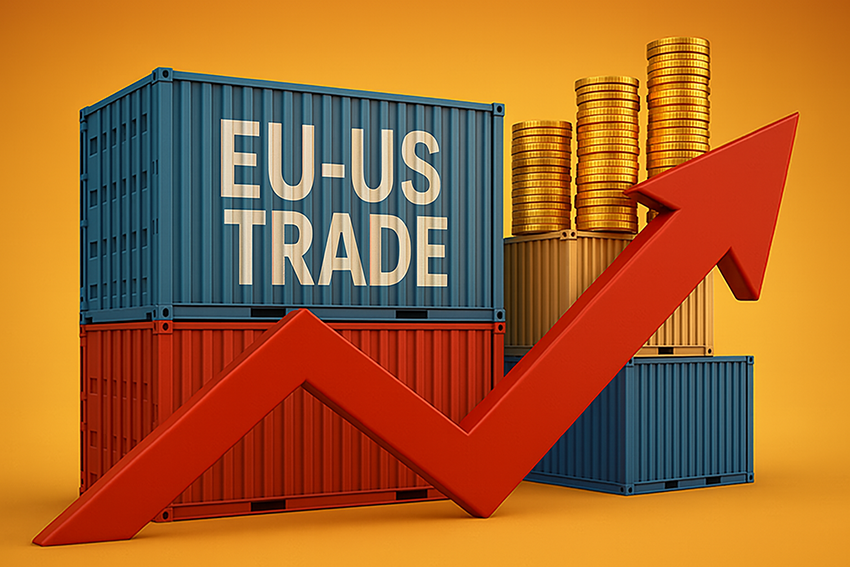2025-07-28
indicators

A new trade agreement between the European Union and the United States was announced yesterday following talks between US President Donald Trump and European Commission President Ursula von der Leyen. While the deal averted the threat of an immediate transatlantic trade war, early analysis from economists suggests that the terms place a heavy burden on the EU side and lack transparency in their formulation. According to Ruben Staffa, foreign trade expert and research fellow at the German Institute for Economic Research (DIW Berlin), the agreement signals a partial thaw in what had been escalating trade tensions. “A trade war between the US and the EU has been averted. Given US President Trump’s previous threats, this is good news for now,” Staffa said in a statement following the announcement. However, he added, “the agreement is tough.” Among the most significant provisions of the deal is a 15 percent tariff on European goods exported to the US — a sharp increase compared to the average tariff rates that applied during President Trump’s first term, which were closer to 1.5 percent. This tenfold rise in import duties could impact a broad range of sectors, including automotive parts, machinery, and industrial goods, placing European exporters at a disadvantage compared to US counterparts. In exchange, the EU has committed to purchasing hundreds of billions of euros worth of fossil fuels and military equipment from the United States. While details on the procurement timetable and breakdown of purchases remain vague, the scale of the commitment has raised questions in Brussels about the implications for the EU’s climate goals and defence autonomy. On a more positive note, the agreement provides relief in several strategic sectors. Tariffs on selected high-tech products — notably semiconductor components essential to the US chip manufacturing industry — have been waived, signaling mutual recognition of supply chain interdependence in advanced technologies. “It is encouraging that no tariffs will be imposed on certain selected groups of goods,” Staffa noted, “perhaps other products will be added to this list of exceptions in the near future.” However, the overall lack of clarity surrounding the agreement has drawn criticism from trade policy experts and lawmakers. “The details of the agreement are not yet known,” Staffa said. “This also applies to many of the other agreements that the US has concluded in recent weeks and months. This approach can hardly be described as a rules-based trade policy.” Analysts also warned of possible looming disruptions in the pharmaceutical sector. The US has reportedly initiated investigations into European pharmaceutical imports, which could pave the way for new product-specific tariffs. If enacted, these would disproportionately affect EU-based pharmaceutical producers and could reduce the value and effectiveness of the broader trade deal. In the European Parliament, early reactions to the deal were mixed. Some MEPs welcomed the de-escalation of trade tensions, but others voiced concern over the concessions made and the opaque negotiation process. “While we are relieved that a trade war has been avoided, we must ask at what cost. This agreement cannot come at the expense of European strategic interests,” one Brussels official commented under condition of anonymity. With the final text of the deal yet to be published, observers expect further political debate and potential legal scrutiny in the days ahead. What is clear, however, is that while the EU-US trade relationship has taken a step forward in terms of engagement, the road ahead will be shaped by deeper questions of reciprocity, sovereignty, and global economic alignment. Source: DIW Berlin

